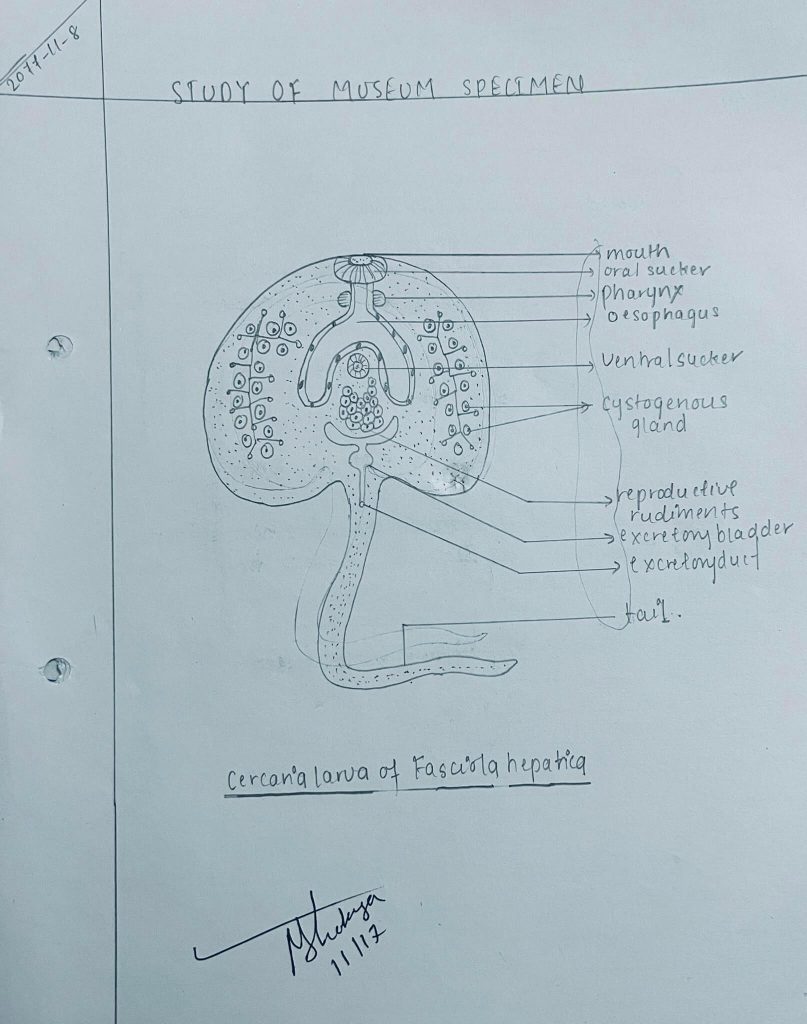Contents: Click for quick access
Cercaria larva of Fasciola Hepatica
COMMENTS:
1) Body of the cercaria is Flat and oval beaning a tail.
2 Body is covered by cuticles and the body wall consists of cuticles, muscles and mesenchyme.
3) It has two suckers, an anterior oval sucker surrounding the mouth and a ventral sucker situated in the middle of the body.
4) Digestive system comprises mouth, muscular pharynx, oesophagus and inverted “n” shaped intestine.
5) Excretory organs of the flame call type are present.
6) Bady space is filled with parenchyma and contains a few cystogenous glands on each side which form the cyst of the Future larva.
7) Rudimentary reproductive organs are also seen.

